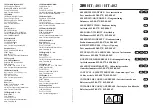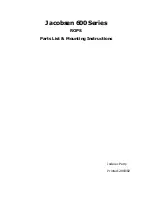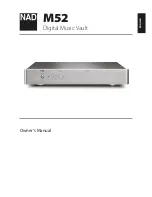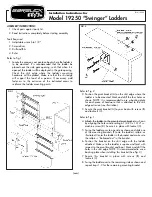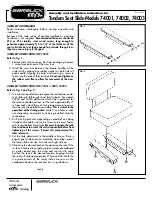
12
MAINTENANCE
Like any valuable piece of processing equipment, the CSI centrifuge deserves regular inspection and
careful maintenance. The frequency and degree of inspection required will vary, depending upon the
type of material being processed and the service conditions. Daily inspections should be made at
start-up until a permanent maintenance schedule can be set up. Once a schedule has been established,
only routine inspections and general observations will be necessary.
Because the material to be processed passes through the centrifuge, all parts contacted wear
somewhat under normal operation. Neglect or untimely replacement of the wearing members will
result in high repair costs and unsatisfactory operating characteristics of the centrifuge. Therefore, a
routine maintenance schedule can be easily set up to change those parts that have a known life before
their wear causes what would normally be unnecessary repairs.
DISASSEMBLY
This section is intended to serve as a guide during maintenance or repairs. Step by step disassembly
instructions are given, followed by more detailed instructions on some parts.
When disassembling your Model WSM-03 Centrifuge, the following sequence may be followed,
although some operations may be carried out concurrently when manpower is available. (Refer to
Dryer Section View).
1.
Remove the water shield (#3) with four ½” bolts and nuts (#4, #5)
2.
Remove screen (#16) from rotor (#17) with six ½” nuts (#19)
3.
Remove cone cap (#11) with four ½” bolts (#13)
4.
Remove cone cap gasket (#10)
5.
Remove cone adjuster (#7) and cone (#15) with one ¾” socket head bolt (#9) and four ½”
bolts (#8)
6.
Remove rotor (#17)
The above parts are all contacted by the processed material and make up the normal wear parts.
These parts will need the most frequent attention.
SCREENS
CSI stocks different screen openings. The best screen for an application can best be determined by
field test because of the many variations of material to be processed.






























